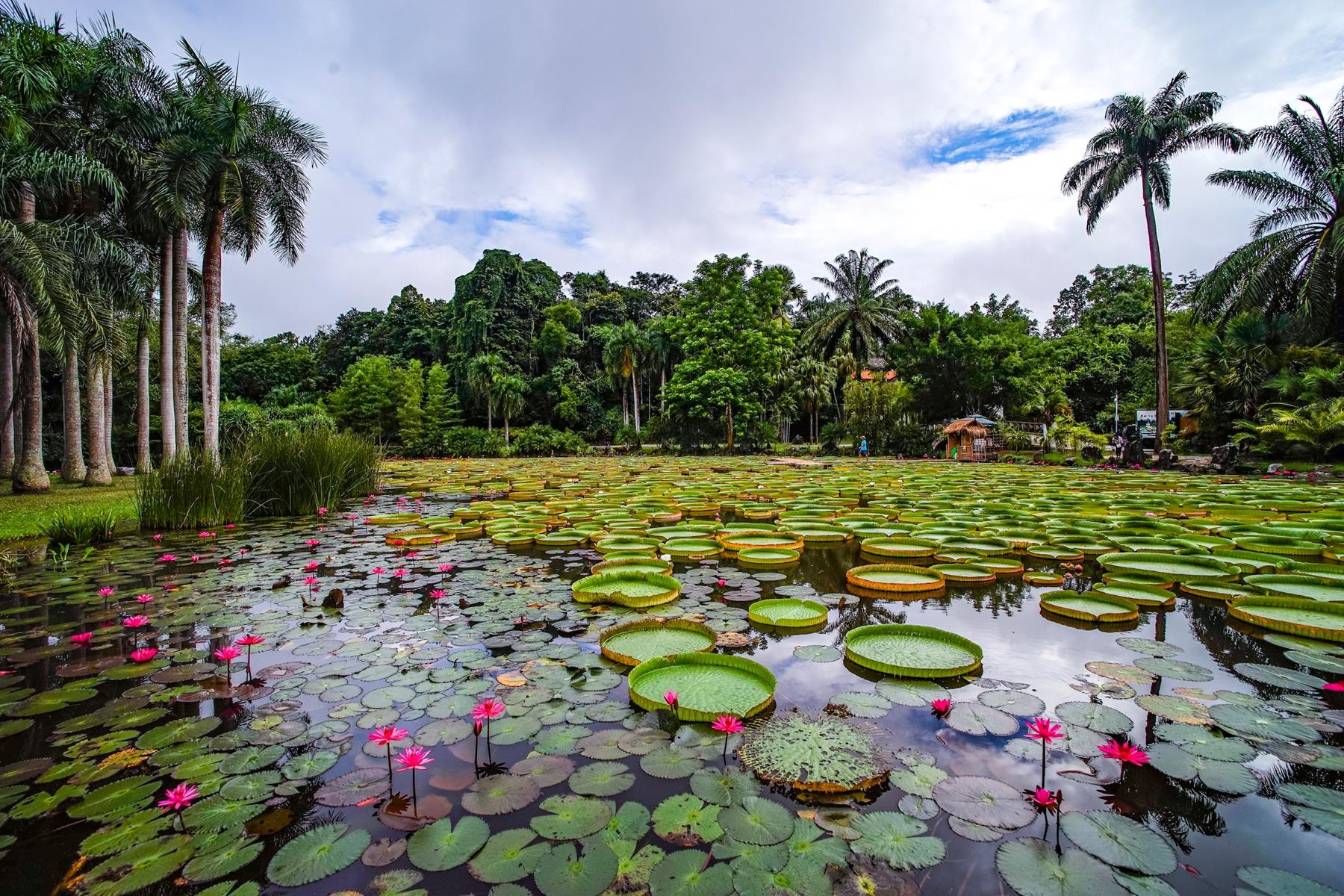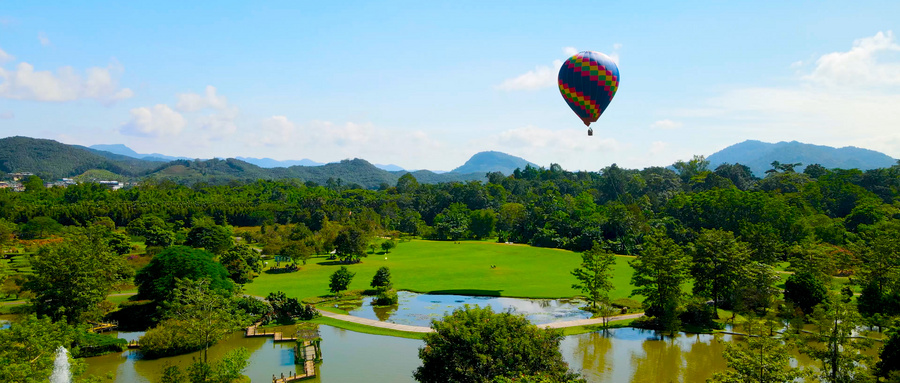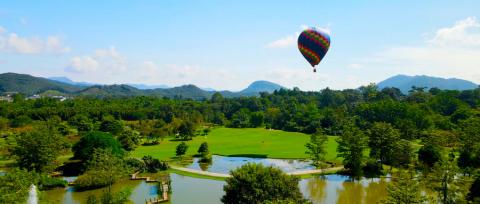Exploring Yunnan’s 5A-Lever Scenic Spot-Xishuangbanna Tropical Botanical Garden


The Xishuangbanna Tropical Botanical Garden of the Chinese Academy of Sciences, abbreviated as Xishuangbanna Botanical Garden, is the largest tropical botanical garden in China and one of the most famous botanical gardens in the world. Located in Menglun Town, Mengla County, Xishuangbanna Dai Autonomous Prefecture, it was established in 1959 under the leadership of the renowned Chinese botanist Cai Xitao. Covering an area of approximately 1,125 hectares, the garden houses over 13,000 species of living plants, organized into 38 specialized zones. It also preserves a piece of primary tropical rainforest spanning about 250 hectares, making it the largest botanical garden in China in terms of area, species collection, and the number of specialized zones. Additionally, it holds the world record for the highest number of outdoor preserved plant species and plant groups displayed to the public.
As a 5A-rated botanical garden, Xishuangbanna Botanical Garden is notable for its vast area, rich species collection, and numerous specialized zones. Thousands of tropical plants from around the world are planted here, including some rare and endangered species. Strolling through the garden, you can see towering Parashorea chinensis, unique palm trees, and graceful Mimosa pudica, among other fascinating plants. The garden also features multiple themed zones, such as the tropical rainforest zone, nursery zone, and palm zone, each with its own unique scenery and characteristics. In the tropical rainforest zone, you can experience the mystery and grandeur of the tropical rainforest, observing the intricate growth of various vines and epiphytes. One of the garden's wonders is the "tree-wrapped stone" phenomenon, where massive aerial roots of trees grow down from the trunks and intertwine with rocky peaks. This spectacle, often referred to as "tree curtains" or "banyan waterfalls," is formed by the roots extending down the rock walls, resembling streams flowing through a mountain gorge. The "king of buttress roots" is a tree that stands a hundred meters tall with buttress roots over seven meters wide.

In the nursery zone, you can closely observe the growth processes of various plants and learn the secrets of plant reproduction. The palm zone offers a view of diverse palm trees in various shapes, highlighting the unique charm of tropical plants.
Visitors to Xishuangbanna Botanical Garden can also participate in a variety of interesting science activities, such as plant identification and picking, enhancing their knowledge while enjoying their visit and appreciating the wonders of nature. The garden is equipped with restaurants, cafes, and other facilities, allowing you to indulge in delicious food while taking in the beautiful scenery.
Western Area: The Western Area features highly ornamental plants and popular zones such as the Palm Garden, Banyan Garden, Exotic Flower and Plant Garden, and the Famous Trees and Celebrities Garden. These zones are visually stunning and ideal for photography and leisurely walks. The Western Area also offers a hot air balloon experience that, although limited to vertical ascents, allows visitors to view the entire botanical garden from above, offering a unique perspective on the rare plants.
Eastern Area: The Eastern Area is characterized by less developed primary tropical rainforest and the Green Stone Forest Scenic Area. Wooden walkways wind through this area, allowing visitors to easily stroll through the tropical rainforest. The most famous sight in the Eastern Area is the giant buttress roots, which can reach heights of over 10 meters and widths extending more than 10 meters, creating impressive wing-like structures. (The buttress root phenomenon is a prominent feature of tropical rainforest trees, where some giant trees extend wing-like structures from the base of their trunks, resembling wall-like structures.) Due to the large area, it is recommended to tour the Eastern Area by car. Both the Eastern and Western Area entrances offer sightseeing car services, costing 50 yuan per person for one area or 100 yuan per person for the entire garden.
Special Attractions:
- Banyan Garden – Strangling Phenomenon: The strangling phenomenon involves banyan and other parasitic tree roots competing for nutrients and water from host plants such as palm and hemlock trees. Over several years, the host plants die due to insufficient nutrients and water.
- Aquatic Plant Garden – Victoria Water Lily: The best time to visit the Aquatic Plant Garden is July and August, when the giant Victoria water lilies in the pond can even support a child weighing up to 40 kilograms.
- Palm Garden – Land and Water Plants: This garden features over 460 species of palm plants from around the world, creating a densely vegetated environment perfect for photography. The unique aspect of this garden is the artificial wetland, home to over 100 species of tropical aquatic plants.
- Exotic Flower and Plant Garden – Unique Plants: With over 300 species of exotic flowers and trees, this garden is highly ornamental. It includes sensitive plants like Mimosa, Dancing Grass, Bottle Palm, Elephant’s Foot Tree, Buddha Belly Tree, Tiger’s Whisker, and the foul-smelling Giant Dutchman's Pipe.
- Famous Trees and Celebrities Garden – Rare Plants: International political and cultural celebrities have planted trees here. Prince Philip planted a Parashorea chinensis, which can reach heights of over 80 meters. Li Peng planted Tieli wood, the hardest domestic timber. Professor Cai Xitao planted the "blood tonic," Cambodia Dragon's Blood Tree.
- Night Tours – Fireflies in the Rainforest: From late April to June, the Western Area of the garden sees numerous fireflies flitting through the trees in the evening, around 8:00 PM, offering a delightful surprise for visitors staying in the garden.
Tips:
- The garden has many mosquitoes in summer, so bring insect repellent.
- The sun can be very strong in summer, so apply and reapply sunscreen to avoid sunburn. Bringing a sun umbrella can protect against UV rays and rain during the wet season.
- Wear comfortable shoes for long walks.
- If driving, remember to bring your original ID card. When approaching the entrance from the expressway, you need to register your ID card at the checkpoint.
Transportation:
From Xishuangbanna:
- Take a bus from the Xishuangbanna Bus Station to Menglun. The bus stops at the West Gate of the botanical garden and ends at Menglun Bus Station, close to the Suspension Bridge Gate. Buses depart every 20 minutes (or when full), costing 23 yuan per person and taking about 1-1.5 hours.
- From Jinghong Bus Station, buses are available to Mengla and Menglun, with fewer buses to Menglun.
- From Jinghong South Bus Station, there is a direct bus to Menglun that stops at the botanical garden, with one trip departing at 8:00 AM and returning at 2:30 PM. The one-way fare is 20 yuan per person, and the round trip is 40 yuan per person.
From Kunming:
- Long-distance buses from Kunming South Bus Station or Kunming High-Speed Rail South Passenger Center to Mengla County stop at Menglun Town. The journey takes over 12 hours.
- Driving from Kunming to Menglun Town on the expressway, look for the "Chinese Academy of Sciences Botanical Garden" sign at the scenic area entrance.
From other cities in China:
- Most cities have direct or connecting flights to Xishuangbanna, with many connections through Kunming.
- From Kunming South Station or Kunming Station, take the high-speed train directly to Xishuangbanna Station, a journey of about three hours.








